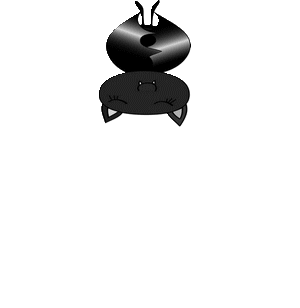Understanding the Role of the Control in a Science Experiment: Definition, Examples, and Best Practices
Introduction
Designing a robust science experiment requires careful planning and a thorough understanding of key concepts that ensure the results are valid and reliable. One such essential concept is the control . The control in a scientific experiment is not just a technicality-it is the foundation that enables researchers to draw meaningful conclusions about cause and effect. In the following sections, we will explore what a control is, how it works, why it is important, and how you can implement it in your own experiments. This article provides clear definitions, practical guidance, and real-world examples to help you master this cornerstone of experimental design.
What Is the Control in a Science Experiment?
In simple terms, the
control
(or control group) in a science experiment is the group or set of observations that does
not
receive the experimental treatment or variable being tested. Instead, it is kept under normal or unaltered conditions. The control allows researchers to compare outcomes and determine whether changes observed in the experimental group are truly due to the variable being tested, rather than other factors
[1]
[2]
[3]
.
For example, if you are testing whether a new fertilizer increases plant growth, the control group would be plants grown without the new fertilizer. Any difference in growth between these groups can then be attributed to the fertilizer itself, assuming all other conditions are identical.
Types of Control Groups
There are several types of control groups used in experiments, each tailored to specific research questions and study designs:

Source: gestionar-facil.com
1. Positive Control Group
A positive control group receives a treatment known to produce a specific effect. This type of control is used to confirm that the experimental setup can detect the desired outcome. For example, in a clinical trial testing a new drug, the positive control might receive an already-approved medication to ensure the experiment can identify a real effect [1] .
2. Negative Control Group
A negative control group receives no treatment or a placebo. It demonstrates what happens in the absence of the variable being tested and helps researchers identify the influence of external factors. For example, giving a sugar pill (placebo) to a group of patients in a drug trial serves as a negative control [1] .
3. Natural Control Group
A natural control group is made up of subjects who naturally do not receive the treatment or exposure. For example, non-smokers can serve as a natural control group when studying the effects of smoking on lung health [4] .
4. Randomized Control Group
Subjects are assigned at random to either the control or experimental group. This randomization helps reduce bias, making the results more reliable. Randomized control trials (RCTs) are the gold standard in clinical research [4] .
Why Is the Control Important?
The main purpose of the control is to establish a
baseline
for comparison. By holding all conditions constant except for the independent variable (the factor being tested), researchers can attribute any observed changes in the experimental group directly to that variable
[3]
. This process minimizes the risk of
confounding variables
-other factors that could affect the outcome-and increases the reliability and validity of experimental results
[5]
.
Without a proper control, experiments risk producing misleading conclusions. For example, suppose you observe improved test scores after introducing a new teaching method but did not compare to a control group using the traditional method. In that case, you cannot confidently claim that the improvement was due to the new approach, since other factors (like increased study time or changes in testing conditions) may have contributed.
Real-World Examples of Control Groups
Understanding controls is easier with practical illustrations:
Example 1: Medical Research
In a clinical trial, researchers test a new medication for headaches. Half the participants receive the new drug (experimental group), while the other half receive a placebo (control group). If the experimental group reports significantly fewer headaches, and the control group does not, researchers can attribute the difference to the medication-assuming all other conditions are the same [1] .
Example 2: Education Studies
Suppose a school wants to evaluate a new math curriculum. They randomly assign some classrooms to the new curriculum (experimental group) and others to continue with the standard curriculum (control group). After a semester, they compare test scores. Any difference can be linked to the curriculum change if both groups were otherwise treated the same [2] .
Example 3: Agricultural Research
Scientists want to assess whether a new pesticide is effective. One group of crops is treated with the pesticide (experimental group), while a similar group is left untreated (control group). Crop yield differences reveal the pesticide’s effect, independent of weather, soil, or other factors.
How to Set Up a Control in Your Experiment
Establishing a valid control involves several concrete steps. Here’s how to proceed:
- Define Your Variables: Identify your independent variable (what you will change) and dependent variable (what you will measure). Keep all other factors constant.
- Designate Groups: Divide subjects into at least two groups: one that receives the treatment (experimental) and one that does not (control).
- Randomize Assignments: Whenever possible, assign participants randomly to reduce bias and ensure groups are comparable.
- Apply Treatments: Administer the independent variable only to the experimental group. Keep the control group under normal or baseline conditions.
- Measure Outcomes: Assess the dependent variable in both groups and analyze the results to determine if the treatment caused a significant effect.
For those conducting experiments in educational, medical, or other professional settings, it may be necessary to consult institutional guidelines or seek ethics approval before involving human participants. You can typically find guidance on experimental protocols in university research offices or by searching official websites of relevant agencies, such as the National Institutes of Health for clinical studies.
Potential Challenges and Solutions
While setting up a control is essential, researchers may encounter obstacles:
- Uncontrolled Variables: Sometimes, factors other than the independent variable can influence results. To address this, carefully standardize all procedures and use random assignment wherever possible.
- Placebo Effect: Especially in medical research, participants’ expectations can influence outcomes. Placebo controls help distinguish psychological effects from true treatment effects.
- Sample Size: Small groups may yield unreliable results. Whenever possible, increase the number of participants to enhance statistical power.
- Ethical Considerations: In some cases, withholding treatment from a control group may raise ethical questions. Consult institutional review boards and consider alternatives, such as using historical controls or crossover designs.
Alternatives to Traditional Control Groups
Not all experiments can use a classical control group. Alternative approaches include:

Source: ans.org
- Matched Controls: When random assignment is not feasible, match control subjects to experimental subjects based on key characteristics.
- Crossover Designs: Subjects serve as their own controls by receiving both the treatment and control condition at different times.
- Historical Controls: Use previously collected data as the control when contemporaneous controls are impractical.
Key Takeaways
Understanding and implementing a proper control is vital for credible experimental results. Controls establish baselines, eliminate confounding variables, and support valid conclusions about cause and effect. Whether you are a student, a teacher, or a professional researcher, mastering this aspect of scientific inquiry is essential for producing reliable and impactful findings.
References
- [1] Simply Psychology (2023). Control Group vs Experimental Group in Science.
- [2] Study.com. Control Group Definition, Purpose & Examples.
- [3] Scribbr (2020). Control Groups and Treatment Groups | Uses & Examples.
- [4] Science Notes (2023). Control Group Definition and Examples.
- [5] Wikipedia. Scientific control.


